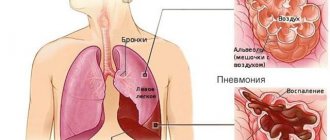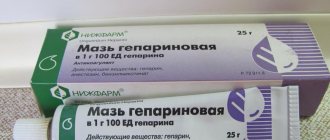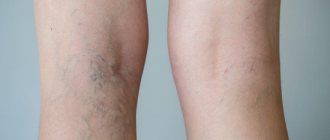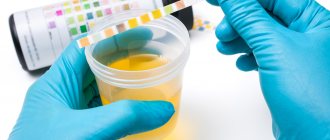Ceftriaxone is partially excreted from the body in the first 24 hours after administration/administration; a complete absence of breakdown products in the blood and urine is observed only after 48 hours.
If the patient undergoes a full course of therapy for 7 days or more, then the elimination period from the last dose of Ceftriaxone will be 7-8 days. This variability is associated with several factors - the patient’s age, a history of diseases of the hematopoietic organs and genitourinary system and other factors.
The rate at which the drug is eliminated from the body is important for understanding when you can drink alcoholic beverages. If the rules are violated, side effects develop and quite severe intoxication occurs.
What affects the removal of Ceftriaxone from the body?
The different rates of elimination of Ceftriaxone breakdown products are associated with several factors:
- Health of the urinary system. If the patient has a history of kidney disease, chronic cystitis or urolithiasis, then you should not expect rapid elimination of Ceftriaxone.
The process of eliminating drugs through the kidneys
- Duration of the therapeutic course. If Ceftriaxone was administered once, it will be eliminated within a day, but therapy is carried out in longer courses, and each repeated dose of the drug prolongs this process. The maximum duration of antibiotic treatment is 30 days (according to indications), in which case decay products will be detected in the blood and urine for another week.
- Pathologies of the liver, gall bladder and ducts. With bile, the main active ingredient of the antibiotic is excreted in a very small amount, but even a mild form of diseases of these organs slows down this process.
- Patient's age. The younger the patient, the slower the elimination of Ceftriaxone. In children, even after short-term therapy, remnants of the decay of the drug are detected for another 6-8 days. In old age, the same amount of time is required, because metabolic processes are already slowed down.
Such knowledge is important because Ceftriaxone is strictly incompatible with alcoholic beverages. If a person is undergoing a full therapeutic course, then even after stopping the drug, you need to wait at least 1 week and only then drink alcohol-containing liquids.
We recommend reading about whether it is possible to combine Ceftriaxone and alcohol. From the article you will learn about whether you can drink alcohol and what kind of alcohol if you inject Ceftriaxone, the consequences of the interaction of alcohol and Ceftriaxone. And here is more information about whether Ceftriaxone can be taken during pregnancy.
If you break the rules, what will be the withdrawal time of the drug?
If you do not know the time of removal of Ceftriaxone from the body and violate the rules of compatibility of the drug with alcohol or other drugs, then the following side effects may develop:
- increased gas formation;
- nausea accompanied by vomiting (does not bring relief);
- bowel disorder - diarrhea;
- skin rashes without clear localization;
- confusion, sometimes complete loss of consciousness;
- paroxysmal pain below (intestinal projection).
Rarely, if the rules are violated, anaphylactic shock or Quincke's edema occurs - this is already a life-threatening condition. It is easy to explain such intoxication: ethyl alcohol molecules interact with the main active ingredient of the drug directly in the bloodstream.
Consequences after Ceftriaxone
Negative consequences after taking Ceftriaxone can develop only in case of violation of the dosage or other prescriptions/recommendations of the doctor:
- feeling of slight nausea;
- diarrhea that occurs regardless of food intake;
- unobtrusive headaches;
- non-critical dizziness;
- allergic reactions in the form of skin rashes, swelling of the nasal mucosa and larynx;
- changes in the chemical composition of the blood - in particular, an increase in the number of platelets.
Usually, the patient’s condition is restored after discontinuation of the drug or against the background of adjustments in prescriptions (reducing the single/daily dosage, reducing the course).
Study of the effectiveness of one dose of ceftriaxone for the treatment of acute otitis media in children
One of the most common complications of acute respiratory viral infection encountered by pediatricians and ENT doctors, especially in young children, is acute otitis media. According to the literature, up to 95% of children experience at least one episode of acute otitis media in the first 7 years of life.
[1].
New trends have emerged in the antibacterial therapy of acute otitis media, for example, the use of shortened regimens, up to a single dose of the drug [2,3,4]. In particular, this is due to the emergence of a number of social categories of patients who, for one reason or another, find it difficult to organize qualified medical care for a long period of time. First of all, these are children left without parents. According to the Ministry of Education, in recent years the number of children left in the Russian Federation without parental care has been steadily growing and in 2001 amounted to 685.1 thousand people [5]. Some of these children are brought up in boarding schools, while others simply become street children. This is especially true for Moscow, since over the past decades the capital has become a center of uncontrolled population migration. According to official data alone, there are about 23 thousand street children in Moscow [6]. These children often get sick, and the main types of diseases are diseases of the upper respiratory tract and ENT organs [7]. In practice, treating this social category of children with traditional methods, with the appointment of an outpatient course of antibacterial therapy, often turns out to be impossible. Refusal of antibiotic therapy altogether or the prescription of standard regimens when there is uncertainty about compliance (when in reality antibiotic treatment will not be carried out!) is fraught with the development of severe complications (mastoiditis, brain abscess, otogenic meningitis, etc.). Treatment of complications requires hospitalization, which is associated with a number of problems in patients of the asocial category, and inadequate treatment of otogenic complications is associated, according to the literature, with a mortality risk of 18.6% [8]. The development of equally effective shortened regimens of antibacterial therapy for the treatment of acute otitis media in children seems promising, and the introduction of such regimens will help to significantly improve the results of treatment of children from socially disadvantaged groups. Another example is a child with otitis from a family of young, actively working parents. During the transition to a market economy, a category of parents appeared who, due to their workload, cannot afford to devote significant time to caring for a sick child. The use of shortened regimens would allow such parents to save time on treating their children without compromising the child’s health, family budget and career growth. Thus, in modern society there are different groups of the population, for the treatment of which single-administration regimens of antibacterial drugs are the most acceptable or even the only possible way to obtain quality medical care. Therefore, the study of the effectiveness and safety of treatment of otitis in children with a single dose of ceftriaxone is relevant
and has not only medical, but also great social significance.
Considering the data from numerous microbiological studies, we can say that the etiology of acute otitis media is well studied. The main pathogens in most cases are Streptococcus pneumoniae and Hemophilus influenzae, accounting for 60–80% of cases [9,10]. Less common in crops are Moraxella catarrhalis (3–10%), Streptococcus pyogenes (2–10%), and Staphylococcus aureus (1–5%). About 20% of crops turn out to be sterile [10]. The role of Mycoplasma pneumoniae, Chlamydia trachomatis and Chlamydia pneumoniae is discussed. Oral medications are usually used to treat mild to moderate acute otitis media. This route of drug administration has undeniable advantages, however, in outpatient settings, the duration of use in some cases makes compliance questionable. The antibacterial drug must be given at regular intervals, which in most cases is not done by parents, and often after the condition improves, they stop taking the drug altogether. In addition, sometimes the child himself may refuse to take the drug by mouth; in some cases, part of the drug may be lost due to diarrhea or vomiting. There are known cases of allergic reactions to sweet suspensions, therefore, in case of an unfavorable allergic background, it is undesirable to prescribe such drugs. In these cases, parenteral administration of an antibacterial drug is an alternative method. One such parenteral antibiotic used to treat otitis media is ceftriaxone
.
It is characterized by a number of advantages associated with pharmacokinetic properties. Ceftriaxone has the longest half-life among cephalosporin antibiotics, which is 8–8.5 hours in adults, and up to 16 hours in children in the first 8 days of life and people over 75 years of age. Ceftriaxone penetrates well into body tissues and fluids. After a single intramuscular injection at a dose of 1 g, the maximum concentration of the drug in plasma is reached after 1–2 hours and is about 81 mg/l. The bioavailability of ceftriaxone is 100%. Serum concentrations remain consistently high 2–4 hours after administration and over a 24-hour period. For more than 24 hours, ceftriaxone concentrations far exceed the minimum inhibitory concentrations for most infectious agents in all tissues and fluids, including the middle ear, nasal mucosa, and tonsils. It is known that peak concentrations in middle ear fluid exceed the MIC for the main causative agents of acute otitis media (Streptococcus pneumoniae and Hemophilus influenzae) by more than 35 times for 100–150 hours [10]. Based on this, it was concluded that a 3-day course of treatment with ceftriaxone is equivalent to a 10-day course of oral therapy with other antibiotics
[10]. A randomized, double-blind clinical trial showed that the therapeutic efficacy of a single intramuscular injection of ceftriaxone was comparable to a 10-day course of amoxicillin therapy [2].
Purpose of this work
– to investigate the clinical effectiveness of one dose of ceftriaxone for catarrhal and purulent forms of acute otitis media in children.
Design:
Open, prospective study. The results obtained were compared with data from studies of the effectiveness of amoxicillin and clarithromycin for the treatment of acute otitis media in children according to the generally accepted regimen [11]. Place of research: emergency department of ENT care of Children's City Clinical Hospital No. 13 named after. N.F. Filatova, Moscow.
Characteristics of the patient group
We studied children aged from 6 months to 12 years who found themselves in the emergency department of the ENT department in June–December 2003 and required outpatient treatment of acute otitis media. 30 children (13 boys and 17 girls) were studied. The effectiveness of treatment was assessed in three age groups: the first group included children from 1 to 3 years (17 children), the second from 3 to 7 years (11 children) and the third from 7 to 12 years (2 children) (Table 1). Acute suppurative otitis media was diagnosed in 13 (43%) cases, acute catarrhal otitis media in 17 (57%) cases. In 10 (33%) children the process was bilateral (Table 2). Concomitant diseases were present in 23 (78%) children: ARVI in 10 (33%) cases, adenoids in 10 (33%) cases, acute bronchitis in 4 (13%) cases, tonsillitis in 1 (3%) case, stomatitis in 1 (3%) case, acute purulent ethmoiditis in 1 (3%) case, lymphadenitis in 1 (3%) case, history of dysbacteriosis in 2 (7%) cases (Table 3).
Research methodology
The criterion for inclusion in the study was the presence of such clinical data as acute onset of the disease (but not more than 3 days), fever over 37°C, ear pain, otoscopic confirmation of acute otitis media: - hyperemia; – infiltration; – decreased mobility; – bulging and loss of landmarks of the eardrum; – presence of purulent exudate in the middle ear. Exclusion criteria were illness lasting more than 3 days, chronic otitis, otitis due to another disease, complicated course of otitis and otitis externa. In the emergency department, after examination by an ENT doctor on the day of admission, the patient was administered one dose of ceftriaxone intramuscularly at the rate of 100 mg/kg, the total daily dose exceeded 2 g. For intramuscular administration, 1 g of the drug was diluted in 3.5 ml of a 1% lidocaine solution. Ceftriaxone was injected deep into the gluteal muscle, no more than 1 g per buttock. The study plan included 5 patient visits to the doctor: on the day the study began, on the 3rd day of treatment, on the 10th, 14th day from the date of treatment and administration of the drug. At each stage, clinical observation of the child’s condition was carried out with assessment of symptoms of intoxication, body temperature, dynamics of the otoscopic picture, and signs of relapse of otitis media. Otoscopic examination was carried out at all stages of observation. The effect of treatment was assessed over time, 72 hours from the moment of administration of ceftriaxone, on the 10th, 14th day from the start of treatment. At follow-up, all children were examined 60 days after treatment and administration of the drug to identify late relapses. Efficiency was understood as the achievement of recovery or improvement, and ineffectiveness was the absence of improvement or relapse of the disease. The study conditions were as close as possible to outpatient conditions. Isolation of the pathogen was not part of the objectives of the study, since in real conditions antibacterial therapy for acute otitis media is carried out empirically and is based on multicenter epidemiological studies.
Results and discussion
Acute otitis media is a complex nosological form, since diagnostic criteria and assessment of the outcome of the disease are often subjective. Therefore, only an ENT doctor can make a diagnosis of acute otitis media and resolve the issue not only of the need for antibacterial therapy, but if there are indications, perform a myringotomy (paracentesis). Indications for paracentesis are severe pain, symptoms of intoxication, high temperature and an otoscopic picture characteristic of purulent otitis. In addition, myringotomy allows you to obtain the contents of the tympanic cavity, examine its microflora and sensitivity to antibiotics. In our work, myringotomy was performed when indicated in 10 children (33%), in addition, in 3 children with purulent otitis, otorrhea was observed already during the initial examination. Inoculation of the flora of discharge from the tympanic cavity was carried out selectively, and there was no growth of the flora in any of the cases. An important condition of the study was medical supervision over the correct administration of the drug. The drug was administered once in the emergency department, thus compliance was fully observed. According to the results of this study, during treatment with ceftriaxone, recovery or improvement was achieved in 28 out of 30 children (93.3%)
.
Positive dynamics during treatment with ceftriaxone were observed quite quickly (Table 4). The most common symptom, ear pain, disappeared in all patients on the first day after drug administration. In the same short time, the symptoms of intoxication and local symptoms of inflammation disappeared, and the temperature returned to normal (Table 4). In one case of ineffectiveness of the drug, ear pain and hearing loss resumed on the 16th day of observation. Clinical signs of improvement in 5 children (17%) appeared on the day of presentation (that is, less than 12 hours after the ceftriaxone injection), in another 5 children (17%) - on the next day (12–24 hours), in 3 children (13%) - by the end of 2 days, in 12 children (40%) - by the end of 3 days. Thus, when examined 72 hours after presentation, 87% of children had no clinical signs of acute otitis media
. It is important to emphasize that the parents of the children included in this study were satisfied and even surprised by such a short period of recovery for their sick child, since many had experience of treatment with other drugs, in other regimens. As noted, regression of clinical symptoms of acute otitis media (fever, ear pain, restless behavior) after administration of one dose of ceftriaxone occurred quite quickly, the main symptoms of the disease disappeared by the 3rd day of treatment in almost all children. With the administration of one dose of ceftriaxone, pathogenetically concomitant diseases of the upper respiratory tract resolved and did not require additional antibacterial therapy. The result obtained was comparable to the effectiveness of treatment with traditional antibacterial drugs for 5–10 days. For example, according to our studies, the effectiveness of amoxicillin with a 5-7 day course was 92.3%, and the effectiveness of clarithromycin with a 5-7 day course was 93% [11]. In studies by other authors [6,7], the effectiveness of treatment with a single administration of lower doses of 50 mg/kg ceftriaxone also turned out to be quite high (79.4–91%). In one case, the drug was ineffective, and in one case, a relapse of the disease was observed, which required additional antibacterial therapy (these cases were regarded as ineffective). Evaluation of the result 60 days after the administration of the drug made it possible to record all cases of possible delayed relapses of the inflammatory process. Taking into account the 60-day observation, we recorded five relapses of the inflammatory process, which were identified during follow-up observation. Analyzing the results of the study in detail, it can be noted that out of 17 cases of catarrhal form of the disease, recovery was recorded in all children, but in two cases a relapse of the disease was noted against the background of concomitant ENT pathology. Local reactions in the form of pain, induration, tenderness at the injection site were not detected. Of the adverse events noted from the gastrointestinal tract, in one case, dyspepsia was noted on the 3rd day of treatment in a 4-year-old boy. According to the parents, the child is being seen by a pediatrician with a diagnosis of dysbacteriosis, which is confirmed by laboratory research methods. In this case, the local pediatrician prescribed a course of biological drugs with a positive effect. I would like to note that in another case of a diagnosis of dysbacteriosis in the anamnesis, a 7-year-old girl did not show any side effects from the administration of ceftriaxone.
Conclusion
The results of this study showed that the effectiveness of treatment of acute otitis media in children with intramuscular administration of ceftriaxone in a single dose was 93%. This effectiveness is comparable to the effectiveness of treatment with traditional antibiotics for a course of 5–10 days [6,7,11]. There were no side effects or allergic reactions. The drug ceftriaxone is well tolerated, safe, and can be recommended in a single dose regimen as a means of empirical treatment of acute otitis media in children. The use of a single administration regimen for acute otitis media is most convenient for the treatment of children from socially disadvantaged groups who are deprived of full care and a long course of treatment in an outpatient setting. Treatment results were assessed as: – excellent – 28 (93%); – satisfactory – 1 (3.3%); – unsatisfactory – 1 (3.3).
References 1. Teel DN, Klein JO, Rosner B. et al. Epidemiology of otitis media during the first seven years of Greater Boston. J Ihfect Dis 1989; 160:83–94. 2. Green SM, Rothrock SG Treatment of acute otitis media in children with single injection of Ceftriaxone. Pediatrics 1993; 91:23–30. 3. Barnett ED, et al. Comparison of Ceftiaxon of Trimethoprim–Sulfamethoxazole of acute otitis media. Pediatrics 1997; 99: 23–8. 4. Reese R., Betts R., Gumustop B. Handbook of antibiotics. Lippincott Williams & Wilkins. 2000: 601.
5. Demoscope Weekly. Electronic version of the “Population and Society” bulletin. Orphanhood, neglect, delinquency of children in Russia (based on the materials of the ninth annual state report “On the situation of children in the Russian Federation - 2002”) No. 113–114 May 19 – June 1, 2003: 1–12. 6. Materials of the government commission. No to drugs, information and journalistic resource. Street children - a problem of national risk 2004: 1–2. 7. Arefiev A. Demoscope Weekly. Electronic version of the bulletin Population and Society. Unnecessary children of Russia. No. 113–114 May 19–June 1, 2003: 1–3. 8. Rudberg RDAcute otitis media: comparative therapeutic results of sulphonamide and penicillin administered in various forms. Acta Otolaryngol. (Stockh.), 1954, 113 (Suppl.): 9–79. 9. Healy GB Otitis media and middle ear effusions. In: Ballenger JJ, Snow JB, Ed. Otorhnolaryngology: Head and Nesk Surgery. 15th edition. Baltimore: Williams & Wilkins, 1996: 1003–9. 10. Kamanin E.I., Stetsyuk O.U. Infections of the upper respiratory tract and ENT organs, Practical guide to anti-infective chemotherapy, ed. Strachunsky L.S. et al., M., 2002: 211–9. 11. Beloborodova N.V., Okatovskaya A.B., Beloborodov S.M. Clarithromycin in the treatment of acute otitis media in children. Clinical Bulletin of Kremlin Medicine, 2001, No. 1: 56–9.
Is it possible to skip a Ceftriaxone injection?
Ceftriaxone injections are given 1-2 times a day for 5 days or more, but you can skip one injection. Of course, there must be compelling reasons for this, for example, the inability to visit a clinic.
There is no need to inject a double dosage at the next time of injection, since the main active substance is still in the body and continues to exert its antibacterial effect on the pathological focus. Such “liberty” is possible due to the complete elimination of the drug in 24 hours, while injections are prescribed every 12 hours.
Ceftriaxone and Paracetamol: compatibility
The instructions indicate that Ceftriaxone is categorically incompatible with other antibacterial drugs and alcohol, so Paracetamol can be taken as part of therapy.
We recommend reading about how syphilis is treated with Ceftriaxone. From the article you will learn how Ceftriaxone works for syphilis, at what stage it is effective, and the treatment regimen. And here is more information about the rules for using Ciprofloxacin and Ceftriaxone.
Ceftriaxone is a powerful antibiotic that should be taken only as prescribed by a doctor and follow the recommendations for combining the drug with other drugs and alcoholic beverages. For safe treatment, you need to know the timing of the removal of antibiotic breakdown products so that there is no toxic effect on the liver, kidneys and other internal organs.
Drug interactions Ceftriaxone
Ceftriaxone should not be added to solutions containing calcium (Hartmann and Ringer solutions). Ceftriaxone is incompatible with amsacrine, vancomycin, fluconazole and aminoglycosides. There is no evidence that ceftriaxone increases the toxicity of aminoglycosides. An antagonistic interaction between chloramphenicol and ceftriaxone has been established. In combination with aminoglycosides, ceftriaxone has a synergistic effect, which is especially important in the treatment of severe infections caused by Pseudomonas aeruginosa .
Useful video
Watch this video about whether you can combine alcohol and antibiotics:
Similar articles
- Ceftriaxone and alcohol: what is the compatibility...
Is it worth combining Ceftriaxone with alcohol? How compatible are beer, wine, vodka and antibiotics? How long does it take for Ceftriaxone to be removed from the body, when can you drink it after injections? Read more - Treatment of syphilis with Ceftriaxone: scheme, how to inject...
How is syphilis treated with Ceftriaxone? What regimen will the doctor prescribe? How to give injections correctly, their dosage. Is it possible to cure syphilis with Ceftriaxone, is recefin better than penicillin? Read more
- Ciprofloxacin and Ceftriaxone: similarities, they are one and the same...
When are the drugs Ceprofloxacin and Ceftriaxone needed? This is one and the same thing, what is the difference between them in terms of indications, contraindications, effect. What is best to take and when. Read more
- Ceftriaxone during pregnancy: is it possible...
Can Ceftriaxone be used during pregnancy? When is it safest - in the early stages in the 1st, 2nd or 3rd trimester. What is indicated in the instructions for use, for which an antibiotic is prescribed. How to give injections correctly, what dosage should be. If you didn’t know you were pregnant and were injected with Cefriaxon, what should you do? Read more
Similar drugs:
- Furacilin Solution for topical use
- Lactobacterin siccum dry (Lactobacterin siccum) Lyophilisate for the preparation of solution for oral administration
- Palin Capsule
- Bactrim Oral suspension
- Nitroxoline Oral tablets
- Pancef Oral tablets
- Nifuroxazide (Nifuroxazide) Oral tablets
- Ercefuryl Oral suspension
- Sextaphag Oral solution
- Pancef Granules for the preparation of suspension for oral administration
** The Drug Directory is intended for informational purposes only. For more complete information, please refer to the manufacturer's instructions. Do not self-medicate; Before starting to use the drug Ceftriaxone-AKOS, you should consult a doctor. EUROLAB is not responsible for the consequences caused by the use of information posted on the portal. Any information on the site does not replace medical advice and cannot serve as a guarantee of the positive effect of the drug.
Are you interested in the drug Ceftriaxone-AKOS? Do you want to know more detailed information or do you need a doctor's examination? Or do you need an inspection? You can make an appointment with a doctor - the Euro lab is always at your service! The best doctors will examine you, advise you, provide the necessary assistance and make a diagnosis. You can also call a doctor at home . Euro lab clinic is open for you around the clock.
** Attention! The information presented in this medication guide is intended for medical professionals and should not be used as a basis for self-medication. The description of the drug Ceftriaxone-AKOS is provided for informational purposes only and is not intended for prescribing treatment without the participation of a doctor. Patients need to consult a specialist!
If you are interested in any other drugs and medications, their descriptions and instructions for use, information about the composition and form of release, indications for use and side effects, methods of use, prices and reviews of drugs, or you have any other questions and suggestions - write to us, we will definitely try to help you.










